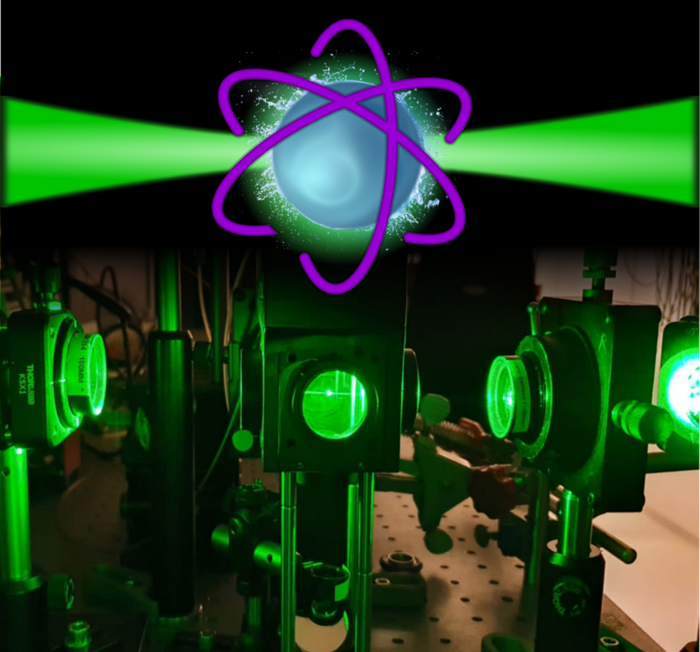At the University of Gothenburg, a new journal article written by researchers has stated that shining light on a water droplet causes effects that are similar to that of an atom. This can help understand the functioning of atoms.

When a beam of light is shone into a water droplet, the light is trapped inside the droplet. Image Credit: Javier Tello Marmolejo
Rays of light will bounce off the inner wall of a water droplet repeatedly, going around and around within it. When its circumference is a multiple of the light’s wavelength, a resonance phenomenon takes place, thereby making the droplet shine more brightly.
Droplet Flashes
In our experiments with laser light, we could see that the light is trapped inside the water droplet. When the droplet shrinks due to evaporation, it appears to flash every time its size is right to create the resonance phenomenon.
Javier Marmolejo, Study Main Author and Doctoral Student, Physics, University of Gothenburg
Marmolejo is the main author of a new study reported in the Physical Review Letters journal.
Owing to a Nobel prize-winning optical tweezers method, scientists have the potential to trap a water droplet with the help of laser beams that target it from two directions. The laser beam is refracted in the water droplet and scatters, thereby trapping the light within.
Further, the scientists found that the droplet flashed in a way similar to what happens when an electron has been emitted from an atom while illuminated by the light of altering wavelengths.
Also, they were capable of using a quantum mechanics analogy to describe how the resonances—the size of the droplet when the scattering was highest—are equal to the atom’s energy levels.
This is responsible for making the droplet a model of an atom, with the added bonus that its size can be altered. It offers a deeper knowledge of how light scatters while being a model for comprehending how atoms work.
Useful in Medication Research
Since a water droplet is about 100,000 times larger than an atom, we get a model of an atom that is visible to the naked eye, an ‘optical atom’.
Javier Marmolejo, Study Main Author and Doctoral Student, Physics, University of Gothenburg
Laser spectroscopy produces data on energy levels, bonds, and structures in atoms and molecules. In the same way, the spectrum of scattered light coming from the water droplets produce data about them.
According to scientists, this could be utilized to quantify the evaporation rates of microscopic droplets with high accuracy.
This breakthrough could be employed with liquids other than water and might be beneficial when studying aerosol droplets in inhalers utilized for medication, for instance. Also, the scientists note that this technology provides a new method to examine water quality.
Small amounts of pollutants in the water change the way the droplets flash, which opens up the possibility of quick and easy measurements of chemical or biological pollutants in water droplets.
Javier Marmolejo, Study Main Author and Doctoral Student, Physics, University of Gothenburg
Journal Reference:
Marmolejo, J. T., et al. (2023) Fano Combs in the Directional Mie Scattering of a Water Droplet. Physical Review Letters. doi.org/10.1103/PhysRevLett.130.043804